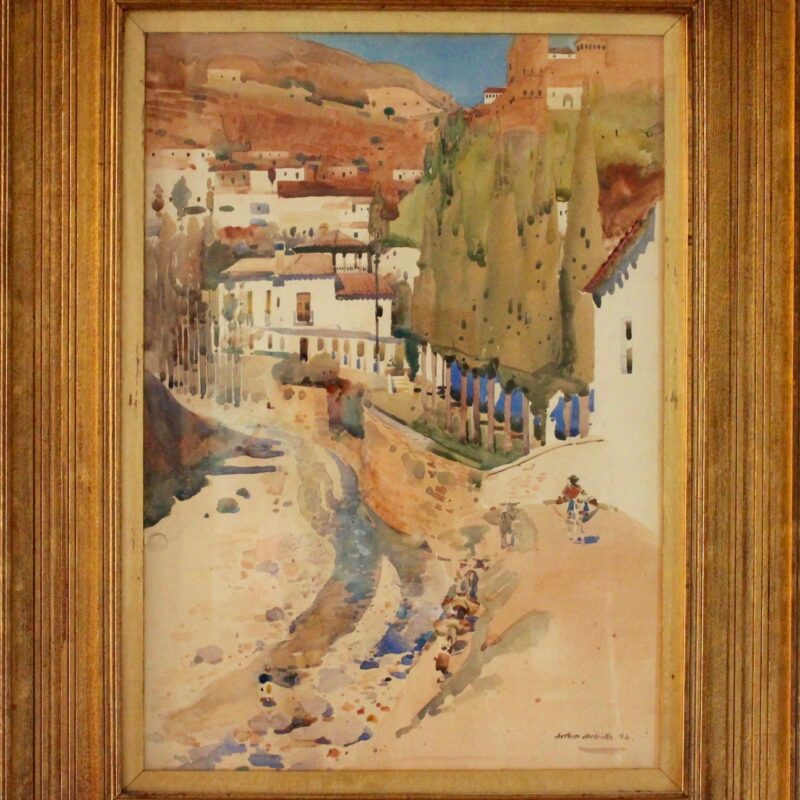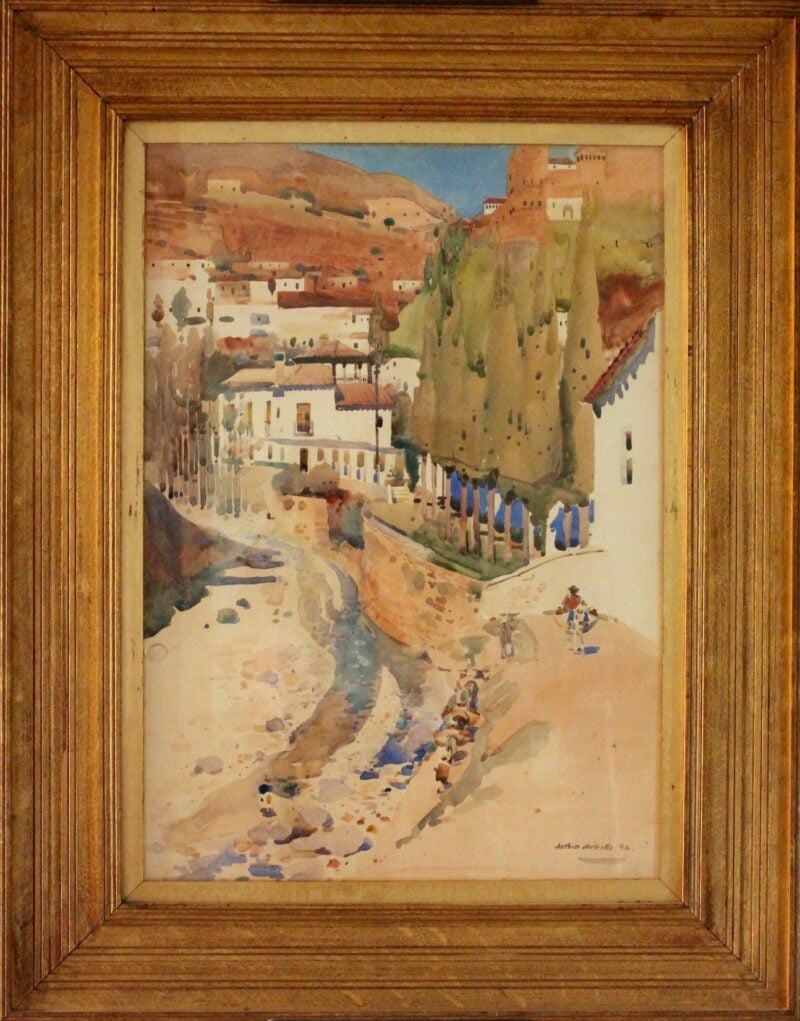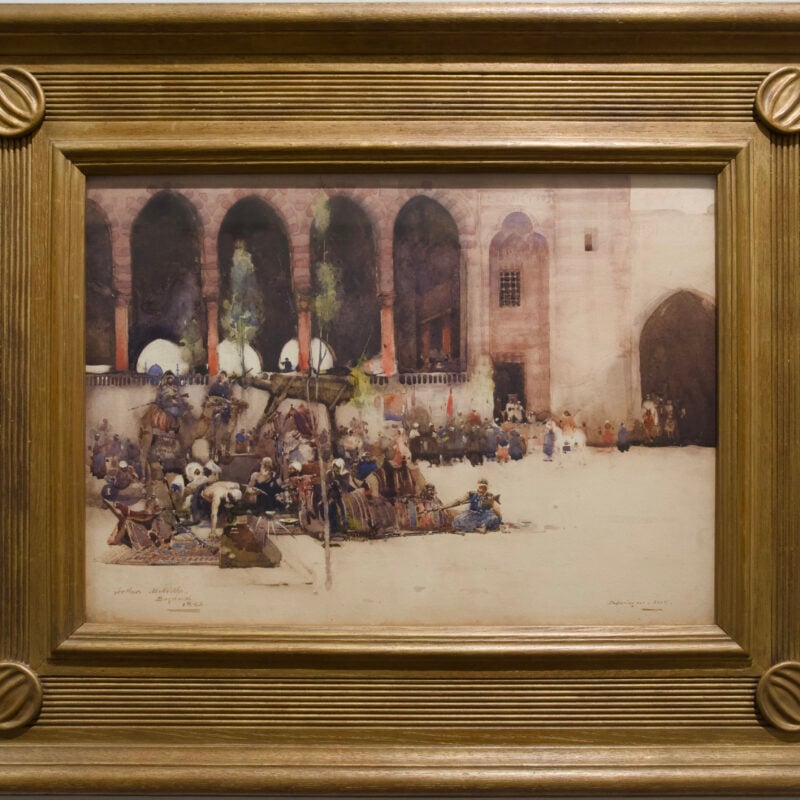
ARTHUR MELVILLE, 1855 – 1904
Arthur Melville was born in Scotland, in Loanhead-of-Guthrie, Forfarshire, in 1858. He began painting while working as an apprentice at a grocer’s, attending evening art classes in Edinburgh. At the age of twenty, he began attending the Royal Scottish Academy School full-time, under the direction of John Campbell Noble. The sale of one of his paintings exhibited at the Royal Academy in 1878 (A Cabbage Garden, 1877, now in the National Gallery of Scotland) enabled him to pay for his studies in Paris from 1878 to 1880, at the Académie Julien. This enabled him to come into contact with the masters of Impressionism and develop his own particular watercolour technique, called “blottesque”, using dabs of pigment on wet paper and blotting them with a sponge.
Between 1881 and 1882, he visited Cairo, Aden, Karachi, Baghdad and Constantinople, developing a sense of colour that represents the peak of his production. The sketches made during these travels provided material for most of his subsequent Orientalist works.
Returning to Edinburgh, Melville met James Guthrie in 1883: the Glasgow Boys partnership was responsible for introducing modernism into Scottish painting and breaking with the academic conventions that prevailed at the time. The depiction of scenes from modern life prompted other young Scottish painters to move to Paris, where Melville returned in 1889.
In 1890, he embarked on another trip to Spain and Morocco, visiting Ronda, Seville, Granada, Toledo, Madrid and Tangier. From 1892 to 1894, he returned frequently to Spain and Italy: this period saw the creation of his most beautiful drawings and paintings, characterised by bold contrasts and surprising modernity.
Melville died in 1904, aged just 49, from typhoid fever contracted in Spain.



